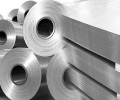US finished steel prices expected to remain high through September: poll

More than half of steel market participants surveyed expect US finished steel prices to remain at their current highs or rise further in the coming six months, industry respondents said in an S&P Global Platts poll.
Out of 91 poll respondents, a total 44% said they expect to see domestic finished steel prices increase in the coming six months, with those expecting prices to rise by more than 10% and those expecting the increase to be less than 10% at 22% each.
Additionally, 12% of survey respondents said they expect finished steel pricing to remain unchanged through September.
However not everyone viewed the current record pricing to be as sustainable, with 30% of survey respondents saying they expected to see finished steel prices fall by more than 10% in the coming six months, while a further 14% saw steel prices falling less than 10% in the near term.
The poll was conducted March 30 among participants of S&P Global Platts Steel Markets North America (SMNA) virtual conference.
The daily Platts TSI US hot-rolled coil index increased by $6 to $1,351.75/st April 9, setting a fresh all-time high. US HRC prices have surged by nearly 210% since August 2020, shattering previous records set in 2018. The run up in pricing has been spurred by sparse service center inventories, tight mill order books and a lack of imports since the fourth quarter of 2020.
US sheet service centers continued to cite robust demand levels from customers late into last week despite record high HRC pricing. With steady inquiry rates from end-users, steel service center sources said they expect HRC availability to be tight for another two months at least, with a mill source citing June spot negotiations beginning with prices at a minimum of $1,350 amid the strong demand.
US prices for long steel products have also seen a sharp uptick since August. On April 9, Platts’ weekly Southeast US rebar assessment was set at a midpoint of $812.50/st, while Platts’ weekly Midwest US rebar assessment was set at a midpoint of $827.50/mt. The midpoints of the assessments are up $247.50/st and $255/st, respectively, from August 2020.
Despite shredded scrap prices moving $20/lt lower during the April scrap buy and domestic rebar prices at a 12-year high, market sources nonetheless anticipated either flat or higher prices through the month as supply remained tight in the week ended April 9.
More supply seen easing HRC prices
More HRC supply is set to come online in the next 12 months and the arrival of more steel imports in the summer months should ease the upward pressure on pricing, industry analysts said during a panel discussion at the March SMNA conference.
“We think as the year plays out as more of the steel on order is delivered, some of the imports arrive, and some of the new capacity is being felt more fully, things will weaken as the year progresses,” said Phil Gibbs, director and senior equity analyst, metals and mining, for KeyBanc Capital Markets.
Andreas Bokkenheuser, executive director of UBS, pointed to supply as the largest driver of US HRC pricing currently.
“What makes this a high-priced steel market is not because demand is reaching new highs; it is supply driven and it’s taking longer for supply to return to the market,” he said, adding this issue is not limited to the US although the country is seeing a bigger impact.
Timna Tanners, managing director for BofA Securities, said US steelmakers did not do as well as global peers when it came to restarting capacity following coronavirus-related production disruptions in 2020.
“The rest of the world has gotten back to pre-COVID levels and beyond in most cases and the US is the biggest laggard in every market we look at,” Tanners said.
This dynamic is changing as more capacity has been restarted, bringing some relief to supply.
More than 3 million st of new capacity is entering the North American market over the next 12 months, and that is sufficient to put the market back in a surplus, Bokkenheuser said, although the question remained when that will all play out.
In a survey of 16 steel market participants, respondents said the largest opportunities for the steel market this year are more modernized steel capacity and fiscal policy.
Source: Platts

 Hellenic Shipping News Worldwide Hellenic Shipping News Worldwide, Online Daily Newspaper on Hellenic and International Shipping
Hellenic Shipping News Worldwide Hellenic Shipping News Worldwide, Online Daily Newspaper on Hellenic and International Shipping






















 PG-Software
PG-Software